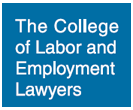Posted by Garrison, Levin-Epstein, Fitzgerald & Pirrotti, P.C. in News
May 14 2020
A lawyer explores all the facts surrounding a COVID-19-related job termination to figure out where the truth lies.
As it appeared in the Connecticut Law Tribune
Lawyers who advocate on behalf of employees often operate as private detectives. It can be challenging for an employee to figure out on her own whether her termination was the product of some legitimate reason (like poor performance or job elimination) or an unlawful one (like discrimination or retaliation).
Our role requires a full exploration of all the facts surrounding the termination, including the underlying employment, to figure out where the truth lies—or at least where the evidence points. In these unchartered waters known as the coronavirus, this task can be particularly daunting to navigate alone. Is the employer exploiting the coronavirus to cover up what otherwise would be a clearly discriminatory or retaliatory termination, or is the company simply making difficult but necessary decisions to protect its long-term viability?
Consider a hypothetical employee who in September 2019 lodged a good faith complaint with Human Resources that she was being sexually harassed by the company’s CEO. No employment lawyer would dispute that, in this example, the employee engaged in protected activity, and it would be unlawful to retaliate against her for doing so.
In order to establish a prima facie case of retaliation, a plaintiff must show that: (1) she engaged in a protected activity; (2) her employer was aware of this activity; (3) she suffered an adverse action; and (4) a causal connection exists between the alleged adverse action and the protected activity.
The causal relationship element may be established by circumstantial evidence, including that the adverse action followed closely in time to the protected activity. We generally refer to this concept as “temporal proximity.”
If the employee was terminated or demoted within a few days or weeks of complaining about sexual harassment, for example, there very well could be sufficient temporal proximity for the employee to prove that, but for her complaint, she would not have been subjected to that action.
But what if the CEO got great legal advice and refrained from taking any action against her back then? Then the coronavirus comes along and gives the company a gift: the perfect “cover” to rid itself of the unwanted employee under the guise of pandemic. The employee can no longer avail herself of the doctrine of “temporal proximity” eight or nine months later, and she loses, right? Not so fast.
Courts have found temporal proximity to exist, notwithstanding the considerable passage of time between the protected activity and the retaliatory conduct. In doing so, they build upon the wealth of cases holding that temporal proximity between the protected activity and the adverse action should be measured from the earliest opportunity the employer has to retaliate against the employee. Enter the coronavirus.
Another opportunity for the employer to use Covid-19 as a sword to violate the law rather than as a shield to protect the company might occur in the context of a reduction in force or job elimination, purportedly connected to a diminution in the company’s bottom line as a result of the pandemic.
Of course, there would be nothing unlawful with such employment decisions if they were free from bias. But if, hypothetically, employees in their 50s and 60s were included in the RIF and their much younger counterparts were spared, the coronavirus excuse may not cut it in court, and the employer may be found to have engaged in age discrimination in the termination process.
In order to establish a prima facie case for discrimination of any type, a plaintiff must show that: (1) at the relevant time, she was a member of the protected class; (2) she was qualified for the job; (3) she suffered an adverse employment action and (4) the adverse employment action occurred under circumstances giving rise to an inference of discrimination.
Under these facts, courts have found that the inference of age discrimination is established by the employer’s choice to terminate those who are older and retain their peers who are substantially younger.
Of course, a similar inference could be reached with any other protected class adversely affected by the RIF or job elimination (such as race, gender, religion, disability, sexual orientation or pregnancy) where those in the protected class are subjected to the adverse action in disproportionate numbers to those similarly situated who are outside that class. Further, aside from scenarios in which whole protected classes are impacted by a RIF, an employer can attempt to “hide” its discriminatory decision vis-à-vis one member of a protected class by simply slipping him or her in among those impacted by (an otherwise legitimate) RIF.
The goal of the plaintiff’s employment lawyer in any discrimination or retaliation case is to ferret out the true motivation underlying the employer’s adverse action against the employee. Indeed, I sometimes wonder whether, in our former lives, the lawyers in my firm were all protagonists in mystery novels. Now that Covid-19 is in the picture, the employer is presented with the opportunity of burying that truth one layer deeper. While the task may be more challenging in this unprecedented time, with careful digging, the effective employee advocate will likely prevail in uncovering the true culprit-whether it is Covid-19, or an employer who is violating the law.
Nina Pirrotti is a partner with Garrison, Levin-Epstein, Fitzgerald & Pirrotti and a graduate of Yale Law School.
Posted by Garrison, Levin-Epstein, Fitzgerald & Pirrotti, P.C. in News
Tagged COVID-19, Nina Pirrotti









